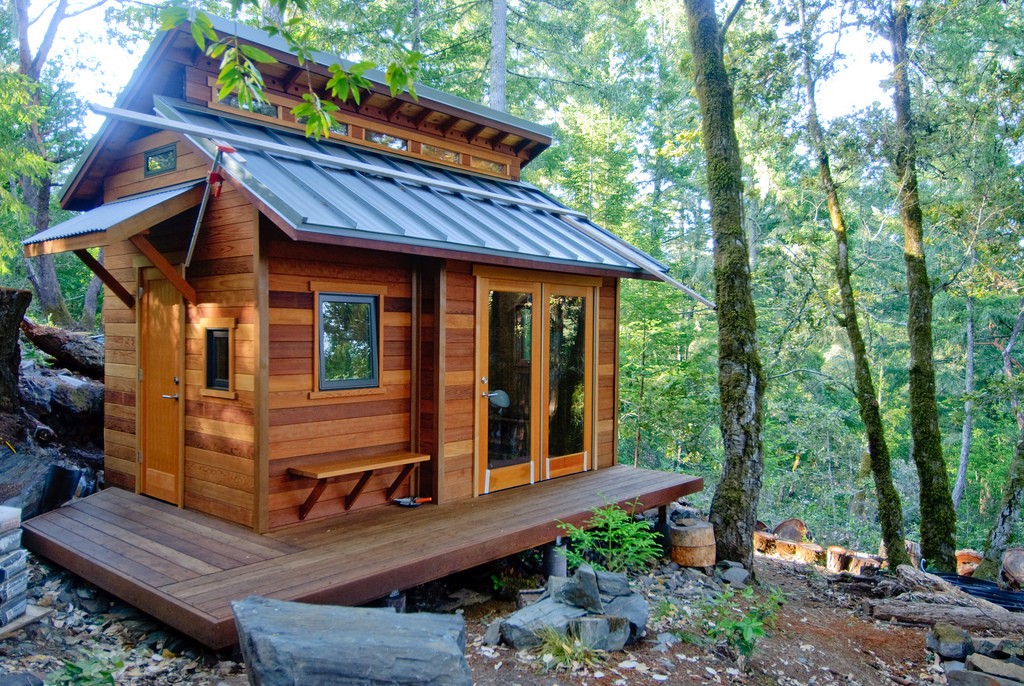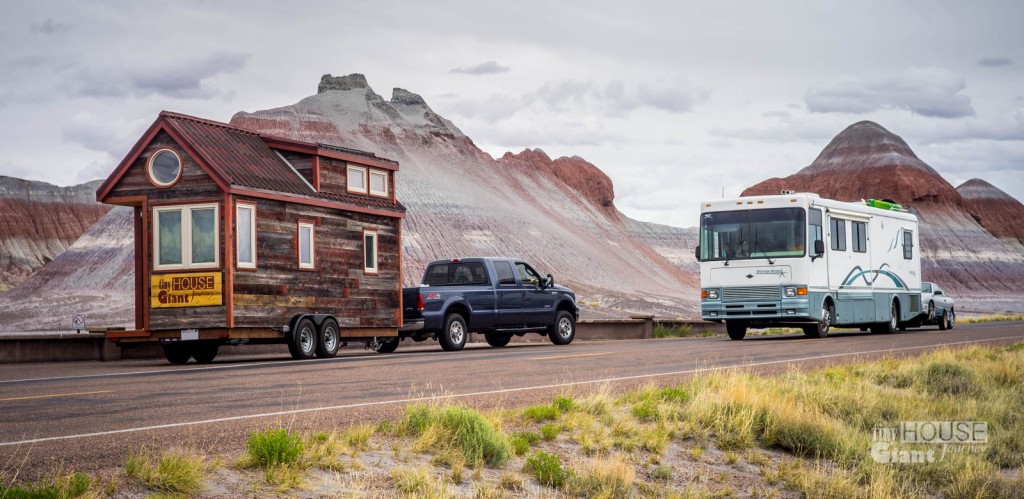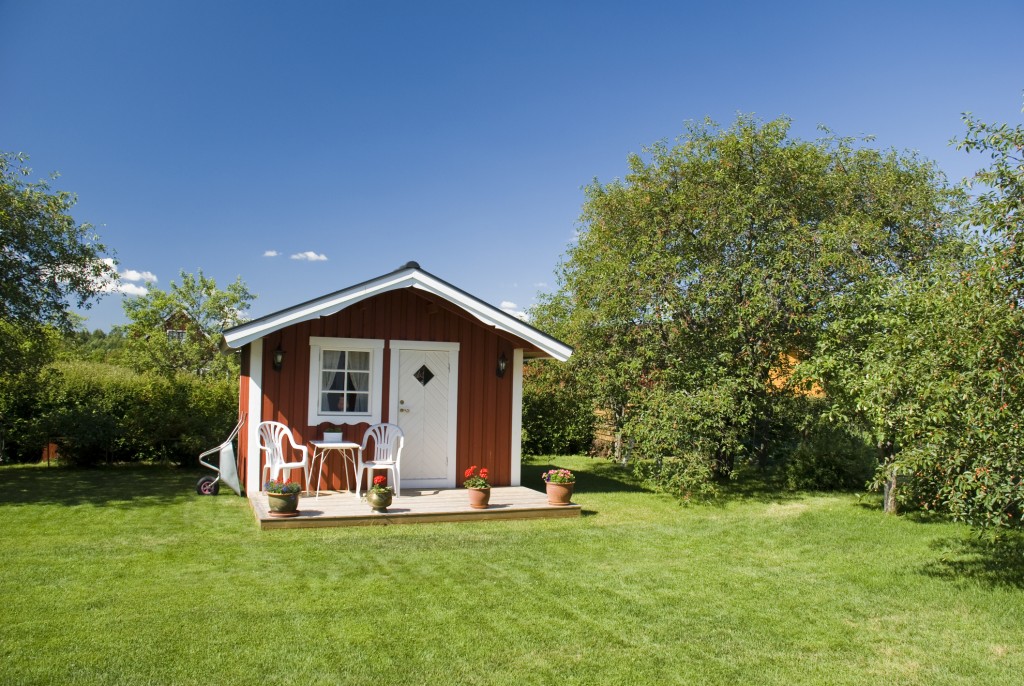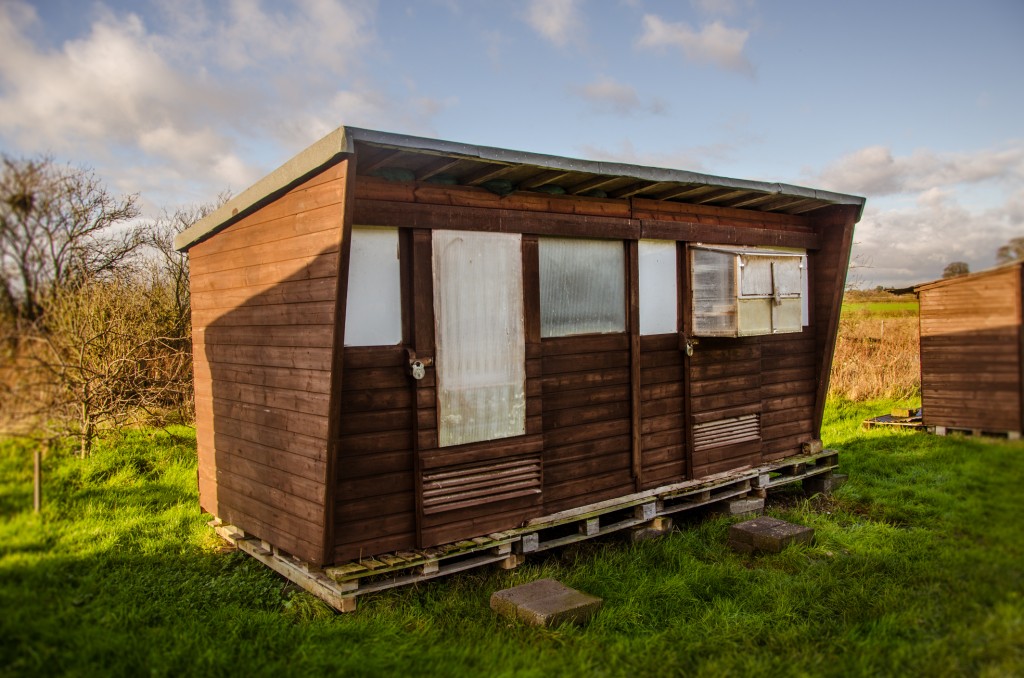As a society, we’ve long equated home size with success—the bigger, the better. Most notorious were the McMansions built in the years leading up to the housing crisis. But for the first time since the recession, home sizes might be shrinking—and interest in a simpler way of life is growing.
In 2015, newly built single-family homes had a median size of 2467 square feet, with a median cost of $296,400. But let’s talk about the exact opposite: The tiny house movement. Tiny homes are smaller than 500 square feet, often with a single bathroom and a lofted bedroom. To put this in context: A tiny home could fit inside the family room of a typical new home.
The tiny house movement is a niche market, to be sure. Tiny homes have attracted a great deal of attention in recent years; and while they may have encouraged us to rethink the size and function of our homes, the number of people willing to downsize to such an extreme degree will remain small. But does the tiny house movement represent an important socioeconomic trend that investors, realtors, and property managers should be watching closely?
First, let’s go over the basics.
What is a Tiny Home, Exactly?
By definition, a tiny home is less than 400-500 square feet; some are as small as 100 square feet. To create the illusion of space, tiny homes employ hyper-efficient design, open floor plans, large windows, high ceilings, double-duty furniture, and micro-appliances. Some are built on wheels and hook up to trailers so residents can travel from place to place; while others are permanent dwellings, built on foundations. A portion are off the grid, with residents utilizing compost toilets and appliances powered by the sun or propane. Some are professionally built, while others are built by their inhabitants, either from a kit or from scratch.
The average US home is 2467 ft². A tiny home is less than 500 ft². Learn more on the #BuildiumBlog! Share on X
Who Lives in Tiny Homes?
Tiny house enthusiasts are a more diverse group than you might think. There seem to be three main populations embracing the trend:
- Many younger people want to own their own homes, but are unable or unwilling to purchase one through conventional means. Many are prevented from saving for a down payment due to student debt and high rent costs. Others are unwilling to commit to a permanent residence and a 30-year mortgage. Still others can’t find entry-level housing in the areas where they want to live—namely, near vibrant urban centers.
- A large portion of older people are beginning to think about downsizing now that their kids have moved out and they’re looking to retire. Many can no longer justify the expense or upkeep involved in a larger home, and they want the free time and discretionary income to enjoy their golden years. Families are also turning to tiny homes to make room for aging relatives.
- Across all age groups, many people feel compelled to live a more self-sufficient, stripped-down, environmentally conscious existence.
What’s the Appeal of Tiny Homes?
Long-term residents of tiny homes enjoy customizing a dwelling that perfectly suits their needs and reflects their values. They want to live a simpler, more intentional existence, spending their income on life experiences rather than mortgage payments. They report that shedding unnecessary belongings leaves their homes and their minds feeling less cluttered. They relish the flexibility of their lifestyle, which allows them to travel at will and reallocate time spent on housework to other pursuits. In addition, they feel that living debt-free allows them to better enjoy their lives. They take great pride in their self-sufficiency, as well as the sustainability of their spaces. Lastly, they enjoy the camaraderie of sharing advice and stories with the growing tiny house community.
Learn why tiny homes are a niche market that demands our attention, now on the #BuildiumBlog! Share on X
What Are the Benefits of Tiny Homes?
Less Debt
A growing number of Americans are wary of taking on staggering mortgages to finance homes larger than they truly need. Just 10% of homes built in 2015 were paid for in cash. Whether they’re paying off massive student loans, struggling to improve their credit following the recession, saving up for retirement, or simply craving greater financial freedom, many people are reluctant to incur additional debt. For one, tiny homes do cost less to build and inhabit; but another factor is that banks generally won’t finance loans for them (more on this later!). This means that a majority of tiny home dwellers have paid for their homes outright and are living debt-free.
Smaller Footprint
The smaller the house, the fewer the materials needed to build it, and the less energy required to power it. Less space also means fewer possessions, which results in less waste and encourages inhabitants to shop conscientiously. In addition, many tiny home residents live off the grid, employing solar-powered appliances, rainwater harvesting systems, compost toilets, and more.
How Did the Tiny House Movement Get So Big?
Next, let’s investigate a larger question: Where, exactly, did the tiny house movement come from? Do recent socioeconomic trends provide us with any clues?
Since the mid-twentieth century, American families have steadily decreased in size. The average household now consists of just 2.54 people—but at the same time, the size of our homes has increased by 62%.
The average American spends one-third of their income on housing; and 1 in 2 Americans admit that they’ve had to make at least one major sacrifice to cover their mortgage in the past 3 years. This means that over half of Americans can’t afford to spend as much as they do on housing in the long-term—forcing them to decide between moving to a less desirable location, or downsizing to a smaller home.
In addition, affordable housing has become increasingly difficult to find, with the gap between supply and demand expected to worsen in 2017. The homeownership rate fell to a record low last year, while the rental rate is rising at an unprecedented clip for Baby Boomers, Gen Xers, and Millennials alike.
For some, moving to smaller homes is a matter of budget, while others are willing to sacrifice size to live in more desirable locations. A growing group is beginning to “right-size” their homes, only paying for the space and amenities that they actually need and can afford. This movement asks: Why should we commit to burdensome mortgages that take 30 years to pay off? Why should we pay to heat and cool rooms that we rarely use? Why should aging Americans delay their retirement to afford oversized homes once their kids have moved out? While most of us would never consider moving to a tiny home, the movement raises valid questions about our perception of need when it comes to home size.
Tiny homes: What's the appeal? Are they even legal? Find these answers & more on the #BuildiumBlog! Share on X
What Are the Tiny Home’s Downsides?
Buying Property & Meeting Legal Requirements
To build a home, of course, you need land to put it on. The cost of land and property taxes can be a significant barrier. An even bigger challenge, however, is finding land where tiny homes are allowed. Many municipalities state that dwellings smaller than a set size (often 1000 square feet) are illegal—sometimes for safety reasons, and sometimes to maintain property values.
Tiny homes are almost never considered a legal permanent residence, so those intent on living in them have developed ways to skirt the laws. In certain states, they’re able to share property with a larger house and classify the tiny house as an accessory dwelling unit (ADU). Many others build their tiny home on wheels and register it as a recreational vehicle (RV); they often move from location to location as legal issues arise. As of 2015, the 5 states where the tiny house movement has been the most successful are California, Oregon, Texas, North Carolina, and Florida.
Utilities
This is another complicating factor in the location of a tiny home, as well as a big source of unanticipated costs. Some municipalities require you to hook up to their utilities or build an acceptable septic system, whether or not you had planned on connecting to the grid. The simplest solution is for tiny homes on wheels; after meeting strict guidelines, these residents may be able to join an RV park to access water, electricity, and sewage disposal.
Upfront Costs & No Access to Financing
Without taking the cost of land into consideration, you can expect to pay $20-40,000 in materials if you’re building it yourself, or up to $100,000 if you’re having it built for you. When you purchase a tiny home, you’re likely doing so in cash. Lenders have low confidence in the resale value of these homes; so without collateral to secure the loan, they’re not willing to back the mortgage. Those built on wheels may qualify for an RV loan if they meet stringent “roadworthiness” standards. Some people get by with small personal loans and credit cards, or by financing the home through their builder. However, living debt-free has become an unofficial tenet of the tiny house movement; otherwise, you’re dealing with all of the stress of a regular home loan—just in a smaller space.
…The Size
Obviously, this is the biggest psychological barrier. Downsizing your home means radically altering your lifestyle—from cutting down your possessions to the bare minimum, to getting used to micro-sized or solar-powered appliances. It’s clearly not a feasible option for a family—the population that needs affordable housing most—due to the cramped conditions and total lack of privacy.

What’s the Outlook on the Tiny House Movement?
There are no official measures nuanced enough to capture the popularity of the tiny house movement, particularly when many tiny homes are on the road or off the grid. However, it’s a fact that interest in downsized, efficient spaces has grown exponentially in just a few years. Personal debt and home prices have ballooned, while affordable housing is in short supply. It makes sense that we would all want a little more freedom to spend our salaries and our free time how we please.
The chic micro-homes popularized by HGTV may be a passing trend. But on a national scale, will we see the demand for smaller houses rise as debt-saddled Millennials purchase their first homes, cautious Gen Xers reenter the market, and aging Baby Boomers retire? Will we see more municipalities legalizing micro-housing to accommodate the scores of adults in need of entry-level units? If the legal barriers to building smaller homes were removed, would their popularity shoot up? It’s all highly possible.
Are tiny homes a passing trend... or a glimpse into the future? Find out on the #BuildiumBlog! Share on XAre There Investment Opportunities for Tiny Houses?
Does the tiny house movement present any opportunities for investors? Many seem to think so:
- “Renting out land to tiny home owners is a simple way to earn a monthly paycheck. […] Look for land that is flat and spacious. You can split the land into equal square footage or offer different sizes for different costs.” (Does It Pay to Invest in Tiny Homes?)
- “Buy land, build [a] tiny home, sell, and make [a] profit. When you flip a tiny home your stakes are lower, your investment is lower, so your risk is also lower than flipping residential property. […] Some people can flip a tiny home every 3 or 4 months. Another way to flip is to purchase a mobile home park and upgrade several of the units to tiny homes. By placing a few ‘crown jewels’ and sprucing up the area or adding a park, you’ve substantially increased the value and appeal of the mobile home community. Then you can sell the entire mobile park at an amazingly larger profit margin.” (4 Ways You Can Profit from the Tiny Home Movement)
- “With a smaller investment amount, fewer permits required, and quicker build times, tiny homes may be the ideal way to create tiny vacation rentals with big rental returns. Offering optional vacation packages like a stocked refrigerator or in-home spa services can up your income potential.” (4 Ways You Can Profit from the Tiny Home Movement)
- “Savvy investors are making money from renting homes and even lending money for construction. One website is even connecting interested tiny home buyers with those willing to finance money through peer-to-peer lending. […] As soon as you see a sector of the marketplace move beyond recreational activity and evolve into a micro economy, it becomes apparent that something bigger is happening.” (Think Tiny When it Comes to 2016 Real Estate Investments)
If you enjoyed this post on the tiny house movement, you’ll love our series on the micro-apartment—another tiny dwelling with the potential to make a big impact. Start reading Part I: Are micro-apartments the next big thing? now!
Read more on Industry Research

